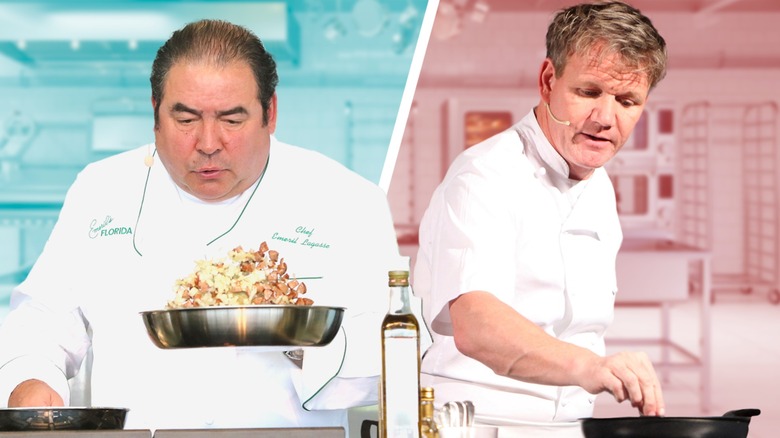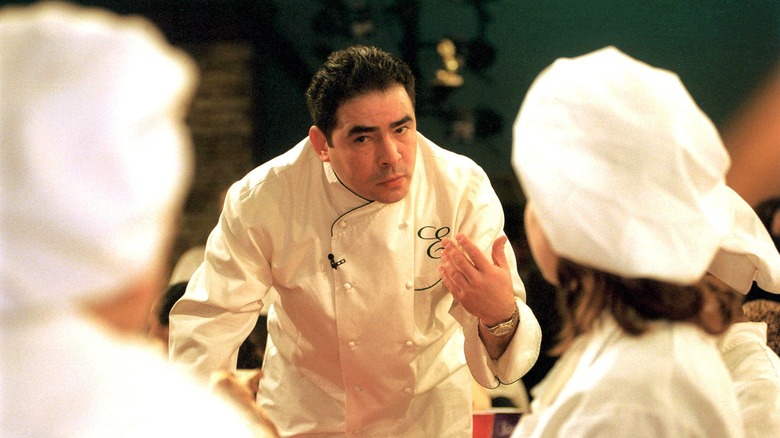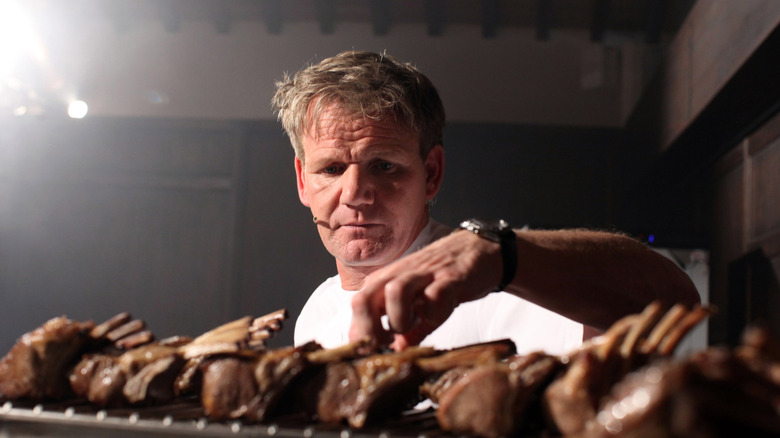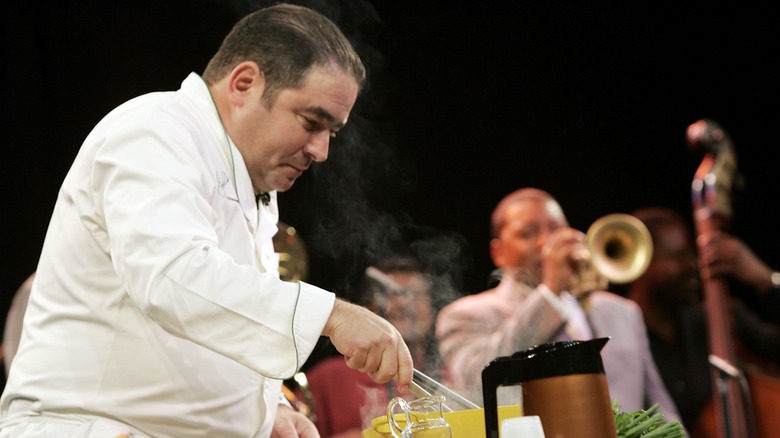The idea of a food celebrity is in a constant state of flux, with social media food influencers receiving levels of clout once reserved for Food Network mainstays. Still, there are a few indisputable giants in food media without whom the industry would look very different. Two such people are Emeril Lagasse and Gordon Ramsay.
Over their carrers, Lagasse and Ramsay helped define celebrity chefdom as we know it, and their respective journeys to fame have at times mirrored one another, then deviated with each serpentine turn. Both chefs are known for their network of restaurants as well their food media careers. Lagasse became the head chef of New Orleans’ storied Commander’s Palace in 1982, and in 1990, he struck out on his own with his flagship Emeril’s Restaurant. In 1993 Lagasse began his long-standing relationship with the Food Network by hosting “How to Boil Water” followed by his own shows, “Essence of Emeril” and “Emeril Live.”

Ramsay followed a similar restaurant to food media pipeline, beginning with early restaurant stints at Harveys and Le Gavroche in London before decamping to Paris. The 1999 documentary series “Boiling Point” followed the chef as he opened Restaurant Gordon Ramsay in London. More television opportunities followed, including “Kitchen Nightmares,” “Hell’s Kitchen,” and “MasterChef.” In 2021, Lagasse and Ramsay finally teamed up for a Season 11 episode of Ramsay’s “MasterChef.” The two master chefs have certainly earned their stripes, albeit via very different approaches to their cooking styles and personal brands
Emeril borrows from his Portuguese background
Emeril Lagasse was born in 1959 in Fall River, Massachusetts to a Portuguese mother, Hilda, and father John. Southeastern Massachusetts is the biggest Portuguese-American hub in the United States, and a young Lagasse soaked up the local Portuguese culinary culture. “One of my chores for my mom was, every day I would have to go down to the local Portuguese bakery and get bread for the table,” Lagasse told CNN. At age 10, Lagasse went to work at Carreiro’s Bakery, eventually graduating from washing dishes to baking muffins and bread.

As Lagasse’s career took him to a culinary program at Johnson & Wales University in Providence, Rhode Island, then Europe, then New Orleans, the chef always held onto his Portuguese roots. Emeril’s website is dotted with recipes for Portuguese favorites, including spicy salt cod cakes with chorizo and stewed fava beans and kale-filled caldo verde. The chef also admits that his mother’s dishes continue to dominate at home and around the holidays. “The biggest influence is really my mom,” he told Tasting Table, citing a Thanksgiving dish called lache, a Portuguese take on stuffing that features chorizo, bell pepper, celery, and onions.
As of this writing, Lagasse is slated to open 34 Restaurant & Bar, his first Portuguese restaurant, in New Orleans in spring 2024.
Ramsay’s background is in French cuisine
While Lagasse’s culinary background exhibits the American melting pot in action, Gordon Ramsay’s culinary building blocks came from French cuisine. Born in Scotland and raised in England, Ramsay studied hotel management after a soccer injury kept him off the pitch.

In the 1980s, he moved to London, where he worked at the French restaurant Harveys under Marco Pierre White, the then-youngest chef to receive three Michelin stars. Wanting to further study French cuisine, Ramsay trained next under Albert Roux at Le Gavroche, the first restaurant in the United Kingdom to earn a Michelin star. At the age of 23, Ramsay moved to Paris where he found new mentors in Guy Savoy and Joël Robuchon. Upon returning to England, Ramsay demonstrated his command for French cooking at Aubergine and then his own restaurant established in 1998, Restaurant Gordon Ramsay.
Ramsay’s mastery of French techniques have come to define his network of restaurants, but the chef has never strayed far from his British roots. Ramsay can whip up a beef Wellington like the best of them, for one. Of all of the times the chef has been asked his ideal final supper — “I’ve been asked that about 2,000 f***ing times,” he once said, per a Reddit AMA — Ramsay has namechecked a roast with Yorkshire pudding, his mother’s shepherd’s pie, and a Scottish breakfast sandwich piled high with haggis.
Emeril is known for his New New Orleans cuisine
Despite hailing from Massachusetts, Emeril Lagasse has become synonymous with the food of New Orleans, even dubbing his take on the region’s food as “New New Orleans” — a blend of Cajun and Creole cooking with contemporary techniques and influences from around the United States. The cooking style arguably helped to redefine dining in the Big Easy and served as the inspiration for Lagasse’s first cookbook, 1993’s “Emeril’s New New Orleans Cooking.”

Lagasse’s reverence for New Orleans cooking began in 1982 when, at only 23, he succeeded executive chef Paul Prudhomme at Commander’s Palace. No easy task, as Prudhomme is often credited with popularizing Cajun and Creole cuisine. According to the then-proprietor of Commander’s Palace, Emma Brennan, Lagasse was more than willing to learn. “Emeril furthered the evolution of Haute Creole cuisine and expanded on what Paul had been doing with Cajun,” Brennan recalled in Bon Appétit, “but he also brought his French-Canadian/Portuguese heritage — and his own insatiable curiosity — to bear on the menu.”
Today, Lagasse is a Cajun and Creole authority, with a number of his restaurants – including Emeril’s, NOLA, and Delmonico – focusing on Louisiana flavors. Indeed, Lagasse’s New New Orleans recipes are some of his most beloved, with his dressed up version of NOLA-style BBQ Shrimp at the top of the list. “It’s been on the menu since day one and is still, hands down, the number one dish,” Lagasse told People.
